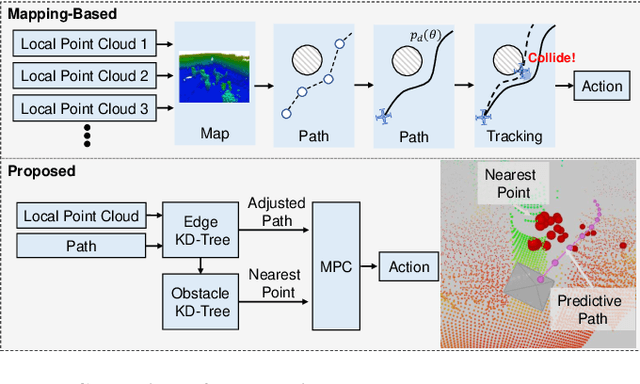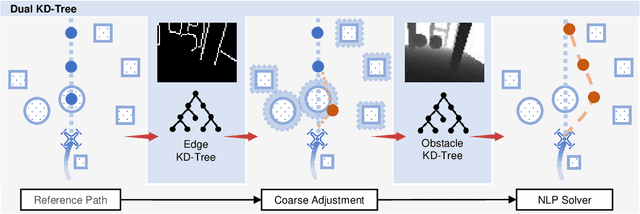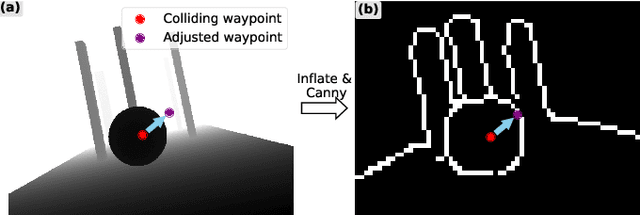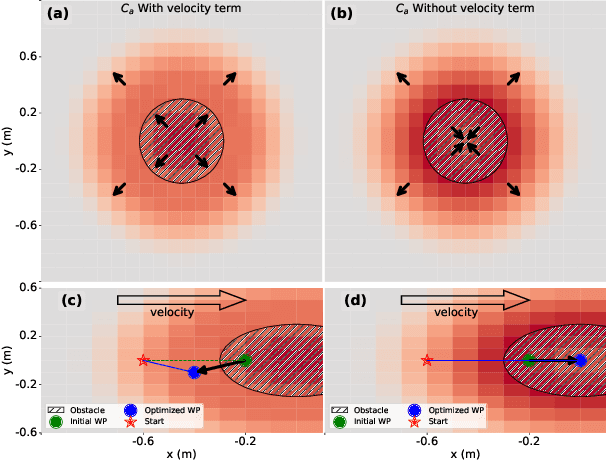Yu Hu
UNIV: Unified Foundation Model for Infrared and Visible Modalities
Sep 19, 2025Abstract:The demand for joint RGB-visible and infrared perception is growing rapidly, particularly to achieve robust performance under diverse weather conditions. Although pre-trained models for RGB-visible and infrared data excel in their respective domains, they often underperform in multimodal scenarios, such as autonomous vehicles equipped with both sensors. To address this challenge, we propose a biologically inspired UNified foundation model for Infrared and Visible modalities (UNIV), featuring two key innovations. First, we introduce Patch-wise Cross-modality Contrastive Learning (PCCL), an attention-guided distillation framework that mimics retinal horizontal cells' lateral inhibition, which enables effective cross-modal feature alignment while remaining compatible with any transformer-based architecture. Second, our dual-knowledge preservation mechanism emulates the retina's bipolar cell signal routing - combining LoRA adapters (2% added parameters) with synchronous distillation to prevent catastrophic forgetting, thereby replicating the retina's photopic (cone-driven) and scotopic (rod-driven) functionality. To support cross-modal learning, we introduce the MVIP dataset, the most comprehensive visible-infrared benchmark to date. It contains 98,992 precisely aligned image pairs spanning diverse scenarios. Extensive experiments demonstrate UNIV's superior performance on infrared tasks (+1.7 mIoU in semantic segmentation and +0.7 mAP in object detection) while maintaining 99%+ of the baseline performance on visible RGB tasks. Our code is available at https://github.com/fangyuanmao/UNIV.
ROD: RGB-Only Fast and Efficient Off-road Freespace Detection
Aug 12, 2025



Abstract:Off-road freespace detection is more challenging than on-road scenarios because of the blurred boundaries of traversable areas. Previous state-of-the-art (SOTA) methods employ multi-modal fusion of RGB images and LiDAR data. However, due to the significant increase in inference time when calculating surface normal maps from LiDAR data, multi-modal methods are not suitable for real-time applications, particularly in real-world scenarios where higher FPS is required compared to slow navigation. This paper presents a novel RGB-only approach for off-road freespace detection, named ROD, eliminating the reliance on LiDAR data and its computational demands. Specifically, we utilize a pre-trained Vision Transformer (ViT) to extract rich features from RGB images. Additionally, we design a lightweight yet efficient decoder, which together improve both precision and inference speed. ROD establishes a new SOTA on ORFD and RELLIS-3D datasets, as well as an inference speed of 50 FPS, significantly outperforming prior models.
EGGCodec: A Robust Neural Encodec Framework for EGG Reconstruction and F0 Extraction
Aug 12, 2025Abstract:This letter introduces EGGCodec, a robust neural Encodec framework engineered for electroglottography (EGG) signal reconstruction and F0 extraction. We propose a multi-scale frequency-domain loss function to capture the nuanced relationship between original and reconstructed EGG signals, complemented by a time-domain correlation loss to improve generalization and accuracy. Unlike conventional Encodec models that extract F0 directly from features, EGGCodec leverages reconstructed EGG signals, which more closely correspond to F0. By removing the conventional GAN discriminator, we streamline EGGCodec's training process without compromising efficiency, incurring only negligible performance degradation. Trained on a widely used EGG-inclusive dataset, extensive evaluations demonstrate that EGGCodec outperforms state-of-the-art F0 extraction schemes, reducing mean absolute error (MAE) from 14.14 Hz to 13.69 Hz, and improving voicing decision error (VDE) by 38.2\%. Moreover, extensive ablation experiments validate the contribution of each component of EGGCodec.
MedCite: Can Language Models Generate Verifiable Text for Medicine?
Jun 07, 2025Abstract:Existing LLM-based medical question-answering systems lack citation generation and evaluation capabilities, raising concerns about their adoption in practice. In this work, we introduce \name, the first end-to-end framework that facilitates the design and evaluation of citation generation with LLMs for medical tasks. Meanwhile, we introduce a novel multi-pass retrieval-citation method that generates high-quality citations. Our evaluation highlights the challenges and opportunities of citation generation for medical tasks, while identifying important design choices that have a significant impact on the final citation quality. Our proposed method achieves superior citation precision and recall improvements compared to strong baseline methods, and we show that evaluation results correlate well with annotation results from professional experts.
Enhancing User-Oriented Proactivity in Open-Domain Dialogues with Critic Guidance
May 18, 2025Abstract:Open-domain dialogue systems aim to generate natural and engaging conversations, providing significant practical value in real applications such as social robotics and personal assistants. The advent of large language models (LLMs) has greatly advanced this field by improving context understanding and conversational fluency. However, existing LLM-based dialogue systems often fall short in proactively understanding the user's chatting preferences and guiding conversations toward user-centered topics. This lack of user-oriented proactivity can lead users to feel unappreciated, reducing their satisfaction and willingness to continue the conversation in human-computer interactions. To address this issue, we propose a User-oriented Proactive Chatbot (UPC) to enhance the user-oriented proactivity. Specifically, we first construct a critic to evaluate this proactivity inspired by the LLM-as-a-judge strategy. Given the scarcity of high-quality training data, we then employ the critic to guide dialogues between the chatbot and user agents, generating a corpus with enhanced user-oriented proactivity. To ensure the diversity of the user backgrounds, we introduce the ISCO-800, a diverse user background dataset for constructing user agents. Moreover, considering the communication difficulty varies among users, we propose an iterative curriculum learning method that trains the chatbot from easy-to-communicate users to more challenging ones, thereby gradually enhancing its performance. Experiments demonstrate that our proposed training method is applicable to different LLMs, improving user-oriented proactivity and attractiveness in open-domain dialogues.
Exploiting Inter-Sample Correlation and Intra-Sample Redundancy for Partially Relevant Video Retrieval
Apr 28, 2025



Abstract:Partially Relevant Video Retrieval (PRVR) aims to retrieve the target video that is partially relevant to the text query. The primary challenge in PRVR arises from the semantic asymmetry between textual and visual modalities, as videos often contain substantial content irrelevant to the query. Existing methods coarsely align paired videos and text queries to construct the semantic space, neglecting the critical cross-modal dual nature inherent in this task: inter-sample correlation and intra-sample redundancy. To this end, we propose a novel PRVR framework to systematically exploit these two characteristics. Our framework consists of three core modules. First, the Inter Correlation Enhancement (ICE) module captures inter-sample correlation by identifying semantically similar yet unpaired text queries and video moments, combining them to form pseudo-positive pairs for more robust semantic space construction. Second, the Intra Redundancy Mining (IRM) module mitigates intra-sample redundancy by mining redundant video moment features and treating them as hard negative samples, thereby encouraging the model to learn more discriminative representations. Finally, to reinforce these modules, we introduce the Temporal Coherence Prediction (TCP) module, which enhances feature discrimination by training the model to predict the original temporal order of randomly shuffled video frames and moments. Extensive experiments on three datasets demonstrate the superiority of our approach compared to previous methods, achieving state-of-the-art results.
Dynamic Compressing Prompts for Efficient Inference of Large Language Models
Apr 15, 2025Abstract:Large Language Models (LLMs) have shown outstanding performance across a variety of tasks, partly due to advanced prompting techniques. However, these techniques often require lengthy prompts, which increase computational costs and can hinder performance because of the limited context windows of LLMs. While prompt compression is a straightforward solution, existing methods confront the challenges of retaining essential information, adapting to context changes, and remaining effective across different tasks. To tackle these issues, we propose a task-agnostic method called Dynamic Compressing Prompts (LLM-DCP). Our method reduces the number of prompt tokens while aiming to preserve the performance as much as possible. We model prompt compression as a Markov Decision Process (MDP), enabling the DCP-Agent to sequentially remove redundant tokens by adapting to dynamic contexts and retaining crucial content. We develop a reward function for training the DCP-Agent that balances the compression rate, the quality of the LLM output, and the retention of key information. This allows for prompt token reduction without needing an external black-box LLM. Inspired by the progressive difficulty adjustment in curriculum learning, we introduce a Hierarchical Prompt Compression (HPC) training strategy that gradually increases the compression difficulty, enabling the DCP-Agent to learn an effective compression method that maintains information integrity. Experiments demonstrate that our method outperforms state-of-the-art techniques, especially at higher compression rates. The code for our approach will be available at https://github.com/Fhujinwu/DCP.
Mapless Collision-Free Flight via MPC using Dual KD-Trees in Cluttered Environments
Mar 13, 2025



Abstract:Collision-free flight in cluttered environments is a critical capability for autonomous quadrotors. Traditional methods often rely on detailed 3D map construction, trajectory generation, and tracking. However, this cascade pipeline can introduce accumulated errors and computational delays, limiting flight agility and safety. In this paper, we propose a novel method for enabling collision-free flight in cluttered environments without explicitly constructing 3D maps or generating and tracking collision-free trajectories. Instead, we leverage Model Predictive Control (MPC) to directly produce safe actions from sparse waypoints and point clouds from a depth camera. These sparse waypoints are dynamically adjusted online based on nearby obstacles detected from point clouds. To achieve this, we introduce a dual KD-Tree mechanism: the Obstacle KD-Tree quickly identifies the nearest obstacle for avoidance, while the Edge KD-Tree provides a robust initial guess for the MPC solver, preventing it from getting stuck in local minima during obstacle avoidance. We validate our approach through extensive simulations and real-world experiments. The results show that our approach significantly outperforms the mapping-based methods and is also superior to imitation learning-based methods, demonstrating reliable obstacle avoidance at up to 12 m/s in simulations and 6 m/s in real-world tests. Our method provides a simple and robust alternative to existing methods.
MASTER: Multimodal Segmentation with Text Prompts
Mar 06, 2025



Abstract:RGB-Thermal fusion is a potential solution for various weather and light conditions in challenging scenarios. However, plenty of studies focus on designing complex modules to fuse different modalities. With the widespread application of large language models (LLMs), valuable information can be more effectively extracted from natural language. Therefore, we aim to leverage the advantages of large language models to design a structurally simple and highly adaptable multimodal fusion model architecture. We proposed MultimodAl Segmentation with TExt PRompts (MASTER) architecture, which integrates LLM into the fusion of RGB-Thermal multimodal data and allows complex query text to participate in the fusion process. Our model utilizes a dual-path structure to extract information from different modalities of images. Additionally, we employ LLM as the core module for multimodal fusion, enabling the model to generate learnable codebook tokens from RGB, thermal images, and textual information. A lightweight image decoder is used to obtain semantic segmentation results. The proposed MASTER performs exceptionally well in benchmark tests across various automated driving scenarios, yielding promising results.
Skeleton and Font Generation Network for Zero-shot Chinese Character Generation
Jan 14, 2025



Abstract:Automatic font generation remains a challenging research issue, primarily due to the vast number of Chinese characters, each with unique and intricate structures. Our investigation of previous studies reveals inherent bias capable of causing structural changes in characters. Specifically, when generating a Chinese character similar to, but different from, those in the training samples, the bias is prone to either correcting or ignoring these subtle variations. To address this concern, we propose a novel Skeleton and Font Generation Network (SFGN) to achieve a more robust Chinese character font generation. Our approach includes a skeleton builder and font generator. The skeleton builder synthesizes content features using low-resource text input, enabling our technique to realize font generation independently of content image inputs. Unlike previous font generation methods that treat font style as a global embedding, we introduce a font generator to align content and style features on the radical level, which is a brand-new perspective for font generation. Except for common characters, we also conduct experiments on misspelled characters, a substantial portion of which slightly differs from the common ones. Our approach visually demonstrates the efficacy of generated images and outperforms current state-of-the-art font generation methods. Moreover, we believe that misspelled character generation have significant pedagogical implications and verify such supposition through experiments. We used generated misspelled characters as data augmentation in Chinese character error correction tasks, simulating the scenario where students learn handwritten Chinese characters with the help of misspelled characters. The significantly improved performance of error correction tasks demonstrates the effectiveness of our proposed approach and the value of misspelled character generation.
 Add to Chrome
Add to Chrome Add to Firefox
Add to Firefox Add to Edge
Add to Edge